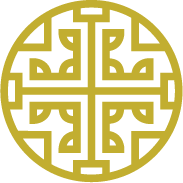Lent Day 32
by Father Patrick Malone
John 6:1-15
Some time after this, Jesus crossed to the far shore of the Sea of Galilee (that is, the Sea of Tiberias), and a great crowd of people followed him because they saw the signs he had performed by healing the sick. Then Jesus went up on a mountainside and sat down with his disciples. The Jewish Passover Festival was near. When Jesus looked up and saw a great crowd coming toward him, he said to Philip, “Where shall we buy bread for these people to eat?” He asked this only to test him, for he already had in mind what he was going to do. Philip answered him, “It would take more than half a year’s wages to buy enough bread for each one to have a bite!” Another of his disciples, Andrew, Simon Peter’s brother, spoke up. “Here is a boy with five small barley loaves and two small fish, but how far will they go among so many?” Jesus said, “Have the people sit down.” There was plenty of grass in that place, and they sat down (about five thousand men were there) Jesus then took the loaves, gave thanks, and distributed to those who were seated as much as they wanted. He did the same with the fish. When they had all had enough to eat, he said to his disciples, “Gather the pieces that are left over. Let nothing be wasted.” So they gathered them and filled twelve baskets with the pieces of the five barley loaves left over by those who had eaten. After the people saw the sign Jesus performed, they began to say, “Surely this is the Prophet who is to come into the world.”
Jesus, knowing that they intended to come and make him king by force, withdrew again to a mountain by himself.
So you are walking with thousands of people to hear a great new teacher. It’s late afternoon and you realize that you brought no food. What do you do? No stores, no markets, nothing to eat for dinner.
In this passage of Scripture in John 6 we see a test, a miracle, and a fulfillment of an Old Testament prophecy. As Jesus enter this region near the Sea of Tiberias he is very purposeful in what he does and says. He climbs a mountain and sits down, raises his eyes and sees a crowd. All of this is set the scene for what is to come next, The Test!
Jesus looks over to Philip and asks, “Where are we going to buy bread so these people can eat”? Jesus did this to test Philip. Was Jesus being mean? Was he to show some kind of flaw in Philip or the other disciples? No! Jesus test us to teach us who we are and who he is.
After the banter about how to acquire bread for everyone, Jesus is passed several loaves of bread and a few fish. He takes the bread and gives thanks. He does the same with the fish. Jesus taking bread and giving thanks is a major theme in this chapter and in the life of Jesus. When Jesus takes bread and gives thanks his followers eat and are fed. In chapter 6 we see that there were 5000 men and we could also image women and children being there as well. Jesus taking bread and giving thanks fed them all with 12 baskets filled with left overs. Later in this chapter Jesus teaches that He is the Bread of Life and those who come to him will never hunger and those who believe in him will never thirst.
This is the miracle! But in John these supernatural events are not called miracles, but signs. Why signs? Signs give direction and point the way. These signs in John point to the fact that Jesus is sent by God and is the Prophet of God foretold in Deut 18:18-19. There, the Lord tells Moses that He will send another prophet like Moses. And the Lord will put his Word in this prophet’s mouth. Interestingly Jesus says in John 12:49, “For I have not spoken on my own authority; the Father who sent me has himself given me commandment what to say and what to speak.” (RSV).
Jesus tests Philip to reveal who he is and that Philip and his fellow disciples are unable to care for the other followers without the aid of Jesus.
Fr. Patrick Malone is a Hospice Chaplain and Rector of Holy Cross Anglican Church in Brookfield WI. In his spare time, he makes delicious homemade cheeses. He has been married to Robin for over 30 years, has three adult children and one grandchild.

